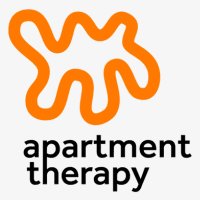In today’s fast-paced world, children face a myriad of challenges that can impact their mental health. From academic pressures to social dynamics, the need for effective support has never been more critical. Personalized child therapy online has emerged as a valuable resource, providing tailored mental health care that meets the unique needs of each child. This article explores the benefits, methods, and importance of online therapy for young minds, ensuring that every child has the opportunity to thrive.
Table of Contents
Understanding the Need for Child Therapy
Children, like adults, can experience a range of emotional and psychological issues. These can stem from various sources, including:
- Family dynamics and changes, such as divorce or relocation
- Academic stress and performance anxiety
- Social challenges, including bullying or difficulty making friends
- Traumatic experiences, such as loss or abuse
- Developmental disorders, including ADHD and autism spectrum disorders
Recognizing the signs that a child may need therapy is crucial. These signs can include:
- Changes in behavior, such as increased irritability or withdrawal
- Declining academic performance
- Physical symptoms like headaches or stomachaches without a medical cause
- Difficulty concentrating or making decisions
- Expressing feelings of sadness, anxiety, or hopelessness
The Benefits of Online Therapy for Children
Online therapy offers a range of benefits that can make it an ideal choice for many families:
- Accessibility: Children can access therapy from the comfort of their homes, eliminating travel time and making it easier to fit sessions into busy schedules.
- Comfort: Being in a familiar environment can help children feel more at ease, which may lead to more open and honest communication.
- Flexibility: Online therapy can often accommodate various schedules, allowing for sessions during evenings or weekends.
- Variety of Resources: Many online platforms offer interactive tools, games, and activities that can engage children and make therapy more enjoyable.
- Privacy: Online therapy can provide a sense of anonymity, which may encourage children to express themselves more freely.
How Personalized Therapy Works
Personalized child therapy online is designed to cater to the individual needs of each child. Here’s how it typically works:
Initial Assessment
The process usually begins with an initial assessment, where a licensed therapist evaluates the child’s emotional and psychological state. This may involve:
- Questionnaires and surveys to gauge feelings and behaviors
- Interviews with parents or guardians to understand family dynamics
- Discussion of specific challenges the child is facing
Creating a Tailored Plan
Based on the assessment, the therapist will develop a personalized treatment plan that may include:
- Cognitive Behavioral Therapy (CBT) to address negative thought patterns
- Play therapy to help younger children express themselves through play
- Art therapy to encourage creativity and emotional expression
- Mindfulness techniques to help manage anxiety and stress
Regular Sessions
Therapy sessions are typically held weekly or bi-weekly, depending on the child’s needs. During these sessions, the therapist will:
- Engage the child in discussions about their feelings and experiences
- Introduce coping strategies and skills to manage emotions
- Monitor progress and adjust the treatment plan as necessary
Choosing the Right Online Therapy Platform
When selecting an online therapy platform for your child, consider the following factors:
- Credentials: Ensure that the therapists are licensed and have experience working with children.
- Specialization: Look for platforms that offer therapists specializing in child psychology or specific issues your child may be facing.
- User-Friendly Interface: The platform should be easy to navigate for both parents and children.
- Privacy and Security: Ensure that the platform complies with privacy regulations to protect your child’s information.
- Reviews and Recommendations: Check reviews from other parents to gauge the effectiveness of the platform.
Engaging Children in Therapy
Getting children to engage in therapy can sometimes be a challenge. Here are some tips to encourage participation:
- Involve Them in the Process: Allow your child to have a say in choosing their therapist or the type of therapy they prefer.
- Normalize Therapy: Talk about therapy as a positive and normal part of life, just like going to the doctor for physical health.
- Set Goals Together: Work with your child to set achievable goals for therapy, making them feel more invested in the process.
- Use Technology: Leverage games, apps, and other digital tools that make therapy fun and engaging.
Supporting Your Child Outside of Therapy
Therapy is just one part of supporting your child’s mental health. Here are additional ways to help:
- Open Communication: Encourage your child to talk about their feelings and experiences regularly.
- Establish Routines: Consistent daily routines can provide a sense of stability and security.
- Encourage Healthy Activities: Promote physical activity, hobbies, and social interactions that can boost mood and self-esteem.
- Monitor Screen Time: Limit excessive screen time and encourage offline activities that foster creativity and connection.
Conclusion
Personalized child therapy online is a powerful tool for supporting the mental health of young minds. By providing accessible, tailored care, it helps children navigate their challenges and develop essential coping skills. As parents and guardians, being proactive in seeking help and supporting your child’s journey can make a significant difference in their overall well-being. Remember, every child deserves the opportunity to thrive, and with the right support, they can achieve their full potential.













